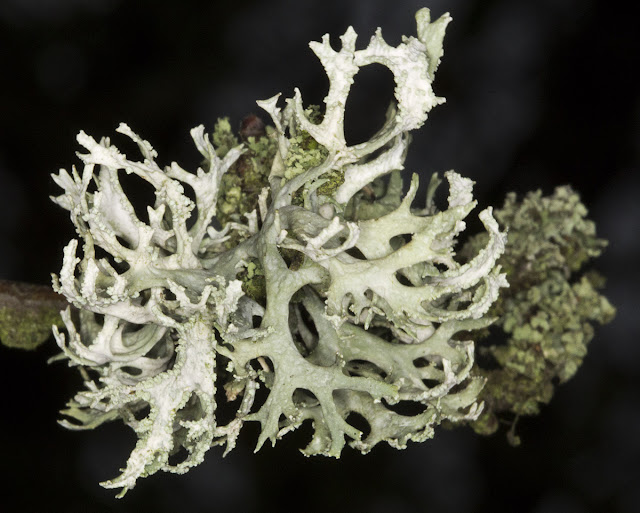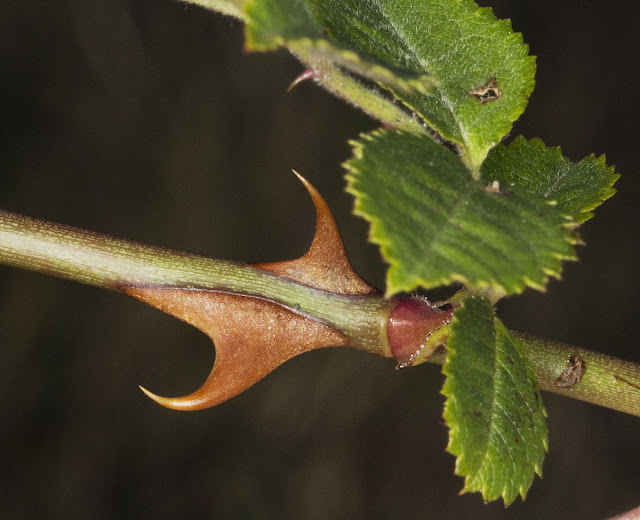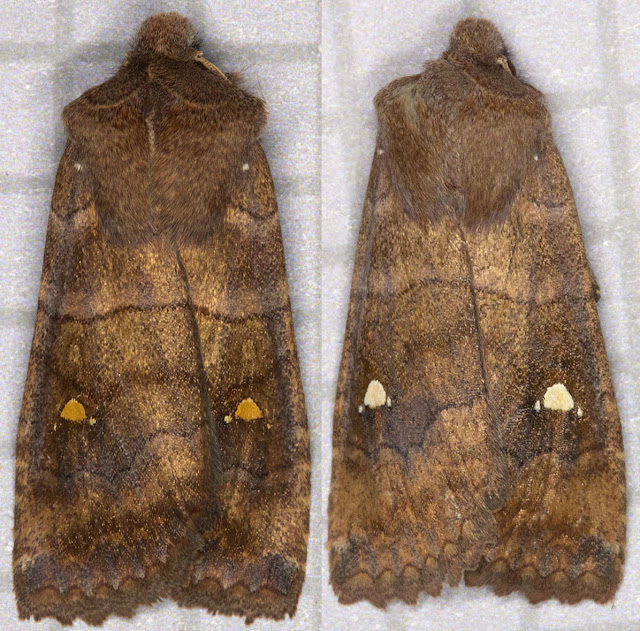On a cold, misty morning the Orpington Field Club visited Blackbush Shaw. "Shaw" means a strip of woodland, and this is one of two shaws on the side of Cudham Valley, opposite the village, that are owned by the Woodland Trust. There's a view of this one in summertime in
this walk report; look for the photo titled "Cudham valley and Bottom Barn Farm with common knapweed and ox-eye daisy."
Of course, that was summer, and now it's almost winter. There were still a few plants in flower, more than we expected, though only a few straggling examples of each; buttercups, red clovers, some yellow composites, a single milkwort. In the shade of one hedgerow were dozens of seed spikes of Broad-Leaved Helleborine. But it was the fungi and lichens that were flourishing the most brightly, and here is a selection of the fungi, all shown from below to celebrate their beautiful and delicately coloured gills. Any that are marked "unidentified" are unidentified by me, not by the experts; I probably wasn't at that spot when they arrived. If anyone knows more, please leave a comment!
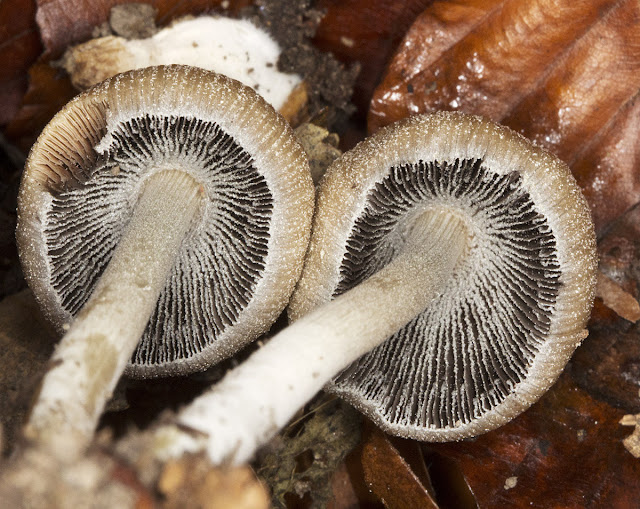 |
| Mica Cap, Coprinellus micaceus. Fungus. Blackbush Shaw, Cudham, 19 November 2011. |
This one has the species name "micaceus" and the common name "Mica Cap" because it is sparkly, particularly when it is young. The camera's flash highlights the reflective cells, which were not so prominent in the subdued light under the trees. It is one of the ink cap fungi, and you can see the black spores developing between the gills that will drip out in an inky liquid when the fungus is ripe.
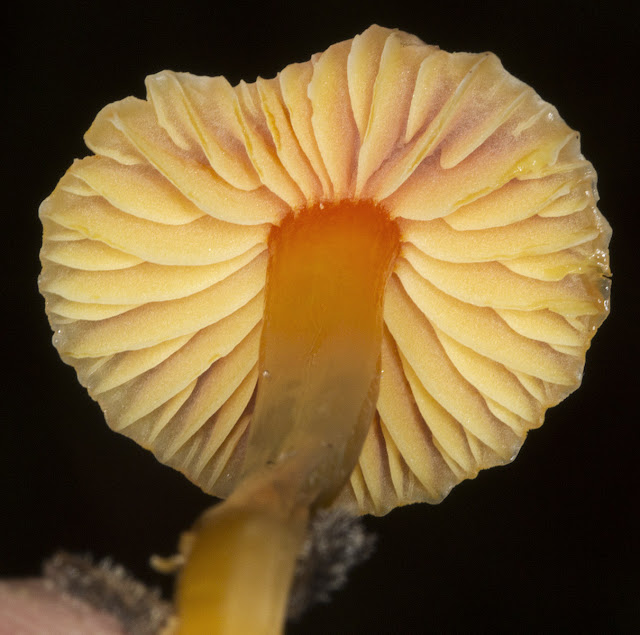 |
| A Waxcap, Hygrocybe species. Blackbush Shaw, Cudham, 19 November 2011. |
This orange beauty, about 3-4 cm across, is a Waxcap. It was in grass, in an open glade near the edge of the wood.
 |
| Unidentified fungus. Blackbush Shaw, Cudham, 19 November 2011. |
An unidentified species, larger and chunkier, found next to the path through the wood.
 |
| Lepista species. Blackbush Shaw, Cudham, 19 November 2011. |
This was being investigated during a short tea break. It was still misty and cold, but we were sheltered from the wind.
The delicate mauve colouration shows that this is a Lepista, related to the Blewits. I don't think the species was conclusively identified.
 |
| Unidentified fungus. Blackbush Shaw, Cudham, 19 November 2011. |
Just a small brown fungus, but its depth of colour and symmetry are unexpectedly beautiful.
The sun did finally break through, as we were climbing back towards the cars. I'll show some lichens next time, from before that happened.









